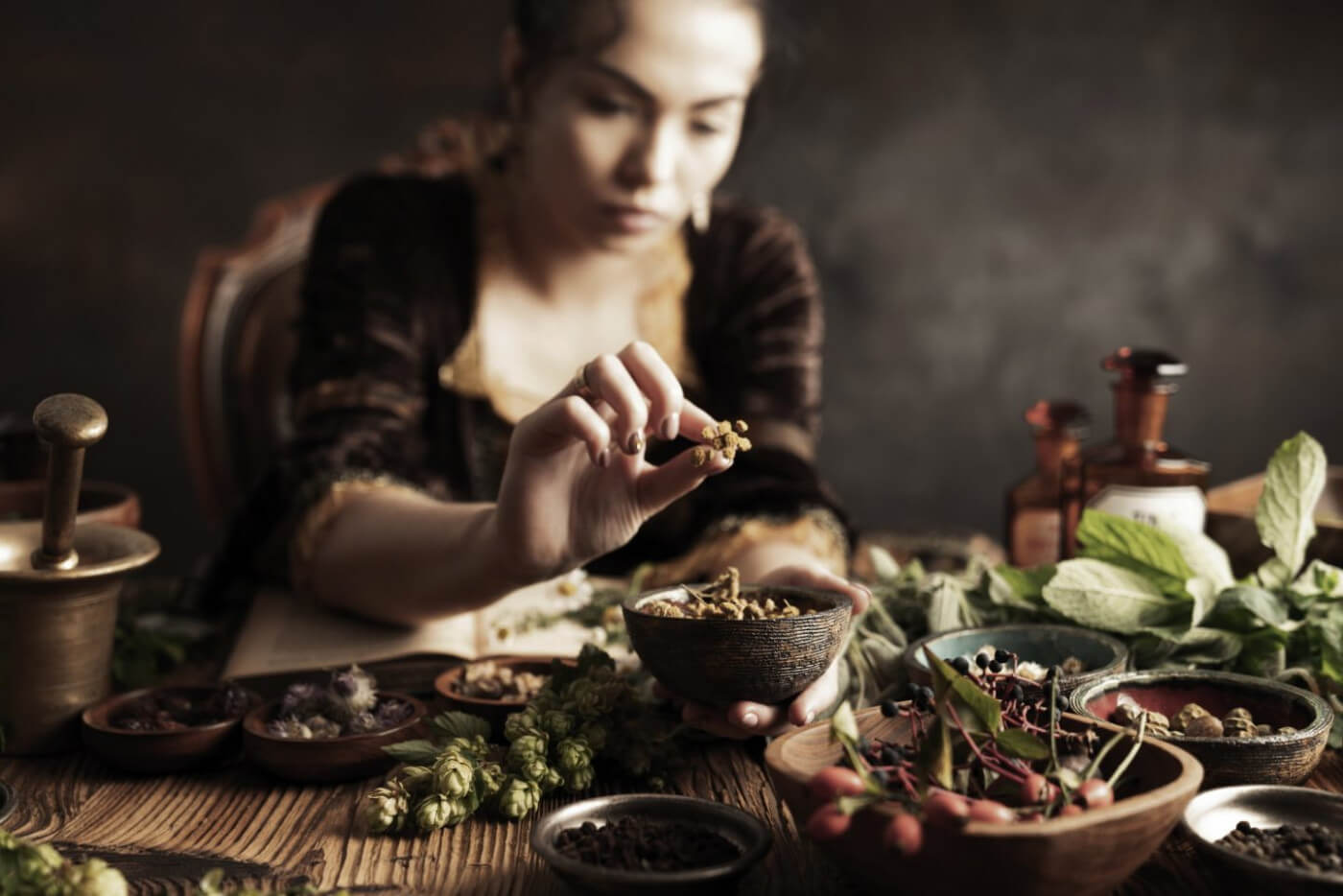Long before the introduction of modern medicine, people from all over the globe used herbs to treat sickness and disease.
Some of us still do.
No matter our background, as healers we ascribe to the universal understanding that herbs are allies. Flowers and roots contain the medicine and wisdom of the earth. We can rely on them to support us emotionally and physically during times of stress and uncertainty.
But how do they work?
Plants are full of phytochemicals like flavonoids, alkaloids, and tannins. Thanks to their antimicrobial properties, these phytochemicals directly impact our immune system by supporting the liver, spleen, kidneys, heart, and other vital organs. When our bodily systems (lymphatic, respiratory, and circulatory, among others) function as they should, it’s easier for our body to fight off germs and resist viral infections.
With the introduction of the COVID-19 virus, there’s no time like the present to brush up on our plant knowledge. Here are five of our favorite plant allies and how to incorporate them into your daily life.
Eleuthero Root
Eleuthero root (also known as Siberian Ginseng) is an adaptogen. That means that it’s our go-to herb when emotions are running high, or anytime we feel anxiety creeping in. Eleuthero root supports the kidneys and thereby relieves stress from the adrenals—the glands responsible for producing the stress hormone, cortisol. Lowering our stress level will improve our outlook which is directly related to improving our overall health.
In addition to emotional support, eleuthero root boosts the immune system. According to Traditional Chinese Medicine, this herb supports our Qi, the body’s lifeforce. In Adaptogens: Herbs for Strength, Stamina, and Stress Relief, authors Winston and Maimes highlight several clinical studies that began in Russia during the 1960s. The research shows that when residents in Siberia took eleuthero root during an influenza epidemic, incidences of infection dropped by up to 2/3.
How to use:
Increase stamina and elevate your mood with a few droppers full of eleuthero root tincture. If you prefer teas over tinctures, create a loose-leaf blend with eleuthero root and other adaptogens like Rhodiola root and gotu kola.
Horehound

If you need relief from a sore throat or chronic cough, horehound might be the herb for you. Although this plant ally has fallen out of popularity over the years, horehound has been used as an ancient remedy for congested lungs as far back as Ancient Egypt. It’s also used as an antiseptic, a diuretic, and as a digestive aid. A warm infusion of horehound is considered diaphoretic, meaning that it can induce sweating and help break a fever.
How to use:
You can add horehound to teas or brew a homemade tincture to carry with you. Horehound syrup, homemade cough drops, and our favorite—horehound throat spray can also alleviate flu and cold-like systems.
Elderberry
In the world of herbal medicine, there are few plants more beneficial to have in your garden than an elderberry shrub. According to archaeological excavations, our ancient ancestors agree. Large quantities of fossilized elderberry seeds have been unearthed in Europe and are believed to be at least 15,000 years old.
Elderberries are renowned for their ability to soothe respiratory infections caused by the flu. A tablespoon of elderberry syrup is a popular remedy among healers—proven to be just as effective as modern antiviral drugs! A little over a decade ago, during the H1N1 outbreak in 2009, researchers wanted to understand more about how elderberry’s antiviral properties worked. Through clinical studies, they discovered that there was one plant chemical to thank—flavonoids. Scientists confirmed that flavonoids in elderberries bind themselves to virus cells, which in turn makes it harder for the virus to attach onto and infect host cells in the body. Elderberries are also full of quercetin, which gives them antihistamine and anti-inflammatory properties.
How to use:
Elderberry syrup is undoubtedly the most popular remedy, but you can also reap elderberry’s health benefits through tinctures or tea.
Calendula

Calendula flowers are one of the most beloved varieties of marigolds. These sunny flowers pop up in the summer months when foragers and makers gather them for some potent plant medicine.
When you consider calendula, you probably think about skincare. Its anti-inflammatory and healing properties make it an important ingredient in salves and oils designed to soothe minor cuts, burns, scrapes, and rashes.
But calendula is also an immune tonic. Its antimicrobial compounds deter the bad stuff. Viruses, fungi, bacteria, and other pathogens are no match for this flower. Since calendula’s response is slow yet persistent, people who have weakened immune systems can take it internally over long periods. The best part? Most people report minimal or no side effects.
How to use:
Blend calendula blossoms with other herbs to make a version of our Cold and Flu tea. Or, mix with melted beeswax, shea butter, and your favorite essential oils to make a medicinal salve.
Ginger
We can’t make a list of our favorite immune-boosting herbs without mentioning ginger root! This herb is a must-have for our home apothecary—and lucky for us, it’s one of those ingredients that we find in most everything. Ginger root is an antihistamine, decongestant, and anti-inflammatory. It’s also a synergetic herb—meaning that it increases the potency of other herbs. Its warming and drying characteristics increase the circulation of fluids from our head to our toes. This makes it easier for our bodies to deliver and absorb essential nutrients.
In Traditional Chinese Medicine, ginger is used to treat afflictions caused by damp, cold, and stagnancy. Ayurvedic followers refer to ginger as the “universal medicine” and suggest eating a small amount of ginger daily to stimulate digestion and mineral absorption. Thanks to an abundance of studies in the modern world, most scientists and health professionals agree that ginger is the ultimate medicinal spice.
How to use:
Ginger is the supreme healing herb—it’s effective in tincture form or when steeped in tea. You can sprinkle it in food (vegetable and ginger stir fry, anyone?), or add to a medicinal beverage like golden milk or fire cider tonic.










